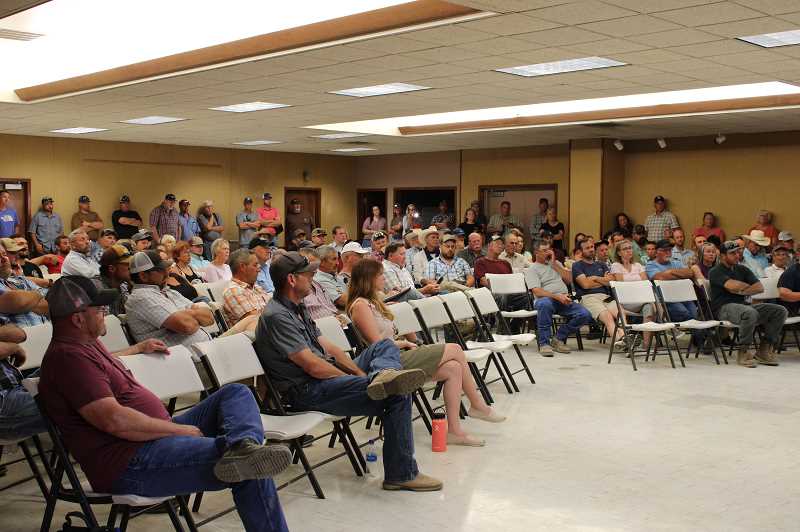This article was published on: 07/2/21 11:21 AM
Irrigation water cutbacks and caps could cost Jefferson County farmers millions
More than 100 Jefferson County farmers with millions on the line listened with grim faces as they took in some bleak news: They’re getting less water.
“The bottom line here is we’ve got to turn Haystack Reservoir around.” Josh Bailey, the new manager of the North Unit Irrigation District, laid out the situation.
With the current demand, Haystack Reservoir will be at dead pool, meaning no storage capacity, in seven to eight days, cutting off a crucial supply for Jefferson County irrigators.
Thursday night, July 1, the NUID Board called farmers to the Jefferson County Fairgrounds to explain their solution.
Not only will the district cut the allotment of water for the second time this season, it will limit each farmer’s daily delivery of water to 1.5% of what each farmer has left in his allotment.
Farmers don’t like the cut in allotment, but they especially bristled at the 1.5% cap on their deliveries.
“A lot of our irrigations systems aren’t built for such a low flow of water,” said one farmer.
Another farmer agreed. “I can’t even run a wheel line on a half a foot of water.”
“In my case,” said another farmer, “whether Haystack gets filled back or not, I’m out of water now.”
Other farmers say the cutback in allotment unfairly penalizes farmers who conserved their water for the end of the season. “We’re the only ones left with water to give.”
The board put the cap on deliveries because when they first cut the allotment June 21 to reduce water demand, demand actually increased.
This cap has three benefits: It ensures the cutbacks will reduce demand on the system, it stretches the available water through the end of August, and in theory it spreads the misery evenly between farmers.
Many of the farmers at the town hall meeting disagree.
Different crops have different needs for water. Carrot seed farmers need the water to last to the end of the year. Grass farmers need their water now.
All the NUID farmers are stuck in the same boat without water. Some will survive, some may not.
“Who’s going to suffer,” said another farmer, “is the little guy.”
NUID won’t stop looking for solutions. “If there’s a stone to look under,” says Bailey, “we’ve looked under it.”
They’re buying water from the Deschutes Valley Water District. Central Oregon Irrigation District committed to share water with the NUID system.
NUID is looking into buying water from the City of Prineville, borrowing water against next year’s allotment from the Prineville Reservoir, adding to the canal with effluent from Bend water treatment, and piping water from Lake Billy Chinook.
A four-letter word simmered under the frustration and anger in the room: frog.
“Is the frog feeling our pain?” shouted one farmer.
The system spilled 35,000-acre feet to conserve habitat for the spotted frog and bull trout, part of the Habitat Conservation Plan the NUID signed onto.
“Why don’t we forfeit the frog and take the penalties?” asked one woman.
“Because the penalties include litigation and possible jail time,” said Bailey. “I’m willing to do many things for you. Prison isn’t one of them.”
The meeting opened up one possibility. Farmers on the same lateral lines may be able to share and swap their delivery percentages, giving one farmer enough flow for his system one day, and the other farmer enough flow the next.
The dynamics of the water shortage change daily. The board pledges to meet frequently to respond to developments as quickly as possible.
By Pat Kruis




